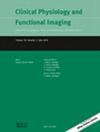Prior beetroot juice ingestion prevents the temporal reduction of endothelial function following acute high-intensity resistance exercise
Abstract
Backgrounds
Nutritional strategies for preventing endothelial function impairment following high-intensity resistance exercise remain largely unknown. Considering that beetroot juice (BRJ) ingestion enhances nitric oxide levels, we aimed to evaluate whether prior BRJ ingestion would prevent endothelial function impairment following high-intensity resistance exercise.
Methods
Twelve young males underwent two experimental trials of high-intensity resistance exercise with prior: (1) placebo ingestion (PLA trial) and (2) BRJ ingestion (BRJ trial). All participants ingested 140 mL of PLA or BRJ (approximately 0.0055 or 12.8 mmol of nitrate, respectively) before the high-intensity resistance exercise (leg extension). Participants performed a resistance exercise session comprising five sets of 10 repetitions at 70% of one repetition maximum. During each intervention trial, heart rate (HR) and blood pressure were continuously measured. Brachial artery diameter, velocity, and flow-mediated dilation (FMD) were measured at pre-, 60 min after PLA or BRJ ingestion, and 10 and 60 min after the resistance exercise.
Results
No differences in systolic blood pressure, shear rate, blood flow, and vascular conductance in response to resistance exercise were noted between the trials (p > 0.05). However, at post-10 min after the resistance exercise, the BRJ trial exhibited a greater brachial artery FMD than the PLA trial (p < 0.05). Moreover, the BRJ trial had a significantly higher ΔFMD from pre- to the post-10–min period than the PLA trial (p < 0.05).
Conclusions
BRJ ingestion prevents endothelial function impairment immediately after a high-intensity resistance exercise.

 求助内容:
求助内容: 应助结果提醒方式:
应助结果提醒方式:


